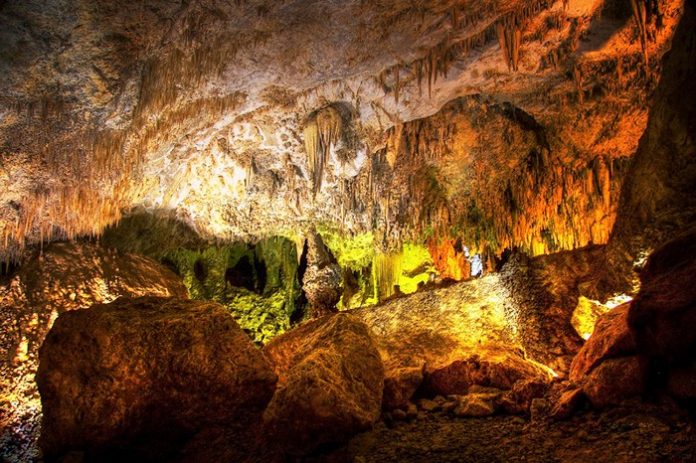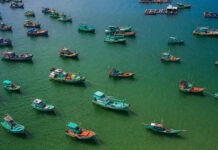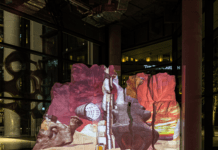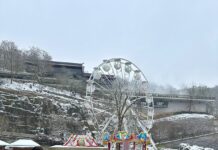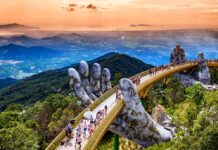One could go from watching the dazzling northern lights in freezing Alaska to basking in the warm water of the Gulf of Mexico, traveling from deep within the Arctic Circle to well past the Tropic of Cancer and still be within the same North American continent. Offering a veritable smorgasbord of experiences and adventures, the North American continent packs quite a punch in travel destinations along its phenomenal length and breadth.
It would probably take a lifetime to fully experience the kaleidoscope of its cultures, cuisines and people, the variety of its landscapes and topography of this continent, but no matter where you go or when you go, even if only fleetingly, North America is bound to take your breath away. Here we take a look at some of the attractions to be found in the United States, which accounts for only one of the 23 nations that make up the continent.
With the Federal Government in the United States under shutdown it may not be possible to visit the country’s many National Parks, Wildlife Refuges or other land and properties managed by Department of Interior, but that shouldn’t deter anyone from visiting the States; there is plenty more to see in this land than the results of political antics.

Northern Lights: Aurora borealis or northern lights are one sight we wouldn’t mind waking up in the middle of the night to view. These magnificent aerial displays occurring nearly a 100km above our planet’s surface are caused by the collision of atmospheric particles with solar wind ions that have been trapped and deflected towards the Poles by Earth’s magnetic field.
The best time to view the aurora is on clear nights from around 1am to 4am during September to March, when these spectacular celestial exhibitions are more frequent. Travel to Fairbanks, the second largest city in Alaska, and less than 200km south of the Arctic Circle, to view the best displays. The aurora borealis, which starts as faintly glowing bands of static greenish white light in the northern part of the sky, build in intensity over time and become more dynamic in color and position. With increased intensity, auroras begin to resemble curtains hung vertically in the sky that are rippling in a light wind. As they reach maximum intensity, these curtains deform into arcs and spirals that can arc dramatically between the visible horizons.

Metropolitan Museum of Art: With an annual budget greater than many cities and more visitors in a year than many countries, the New York Metropolitan Museum of Art is a self-contained cultural city state. More than two million objects of art are spread across nearly 69,000sq m of display space.
Despite recent major changes the ‘Met’ as it is fondly referred to has not lost its ability to thrill, confound, inspire and exhaust the tens of thousands who file past its doors every day. From Greek and Roman Art to Medieval and Ancient Near Eastern Art; from American Decorative Arts to Modern Art, Photography, Musical Instruments and the Costume Institute, the Met’s phenomenal list of curatorial departments includes something for just about everyone.
Carlsbad Caverns: Scores of wondrous caves hide under the Guadalupe Mountains in southeastern New Mexico at this unique national park, which covers 190 sq km. The cavern formations are a wonderland of stalactites and fantastical geological formations that can be visited by either taking the one-minute elevator ride, or a slow winding 3km walk through subterranean pathways.
The Big Room, a stupendous limestone chamber at the bottom is over 1.2km in length, nearly 200m wide and over 77m in height. Over millions of years water seeping down from the surface formed the magnificent stalactites seen today, while water evaporating from the ground of the caves formed the large upward looming columns called stalagmites. The cave is also the natural habitat of hundreds of thousands of bats that regularly emerge out in a dense group from late spring to early winter. Watching the cloud of bats as they emerge from the caves and cock-screw upwards in a counterclockwise direction is an experience worth having when visiting these caves.

Everglades: One of the best ways to experience the serenity of the Everglades — somehow desolate yet lush, tropical and foreboding — is by paddling the network of waterways that skirt the northwest portion of the park. The 10,000 Islands consist of many (but not really 10,000) tiny islands and a mangrove swamp that hugs the southwestern-most border of Florida. The Wilderness Waterway, a 160km path between Everglades City and Flamingo, is the longest canoe trail in the area, but there are shorter trails near Flamingo. Most islands are fringed by narrow beaches with sugar-white sand, but note that the water is brackish and very shallow most of the time. It is not Tahiti, but it is fascinating. You can camp on your own island for up to a week. Getting around the 10,000 Islands is pretty straightforward if you religiously adhere to National Oceanic & Atmospheric Administration (NOAA) tide and nautical charts. Going against the tides is the fastest way to have a miserable trip.

Mariposa Grove of Giant Sequoias: Wawona, about 27 miles south of Yosemite Valley, is the park’s historical center, but the main lure really is the Mariposa Grove of Giant Sequoias the biggest and most impressive cluster of big trees in Yosemite. The star of the show – and what everyone comes to see – is the Grizzly Giant, a behemoth that sprang to life some 2700 years ago, or about the time the ancient Greeks held the first Olympic Games.
You can’t miss it – it’s a half-mile walk along a well-worn path starting near the parking lot. Beyond here, crowds begin to thin out a bit, although for more solitude you should arrive early in the morning or after 6pm. The big attraction in the upper grove is the Fallen Wawona Tunnel Tree, the famous drive-through tree that toppled over in 1969. Parking is very limited, so go early or late or take the free shuttle bus from the Wawona Store or the park entrance. The grove can also be explored on a one-hour guided tour aboard a noisy open-air tram leaving from the parking lot.

Cartoon Art Museum: Located on San Francisco’s Mission Street, introducing the Cartoon Art Museum to fans of comics would be an insult. But even fanboys will learn something from the regular lectures in the Museum, about 1930s efforts to unionize overworked women animators, and shows on underground comic legends like Spain Rodriguez and Trina Robbins. Founded on a grant from Bay Area cartoon legend Charles M. Schultz of Peanuts fame, this unique institution houses approximately 6,000 original pieces in its permanent collection.
The museum features the dark and the racy, as well as political cartoons, including R. Crumb drawings from the ’70s and a retrospective of political cartoons from the Economist by Kevin ‘Kal’ Kallaugher. Lectures and openings are rare opportunities to mingle with comic legends, Pixar studio heads and obsessively knowledgeable collectors.

